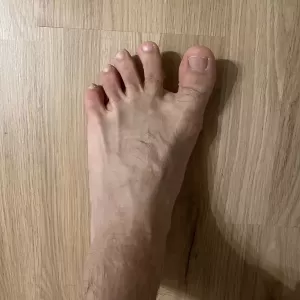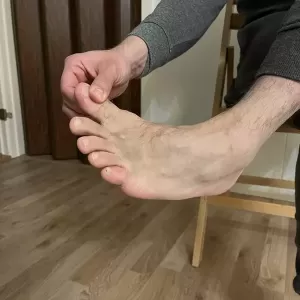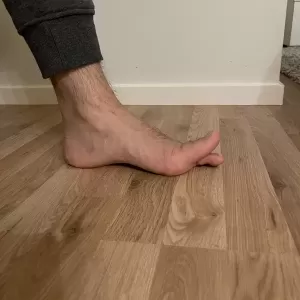Adductor hallucis stretch: Best Stretches For Flexibility
Adductor hallucis is an intrinsic muscle in your foot that has a primary role to move your big toe toward the midline of your body (adduction).
Additionally, this muscle supports the transverse arch, especially during the push-off phase in the gait cycle.
Gait cycle – a synonym for walking pattern.
Let me show you the best way to stretch your adductor hallucis muscle.
Stretches For Adductor Hallucis
To perform the effective stretch for this muscle, you should move your big toe away from the midline of your body (abduction). Additionally, you can even perform an extension of the big toe to enhance the stretching intensity.
Here are few examples how you can achieve that:
1. Standing Toe Spread
From standing, spread your toes as much as you can. Focus on spreading the big toe towards right side (with your left foot). Repeat 10x.
2. Seated Adductor Hallucis Stretch
While sitting on a chair, grab your big toe with your fingers and gently pull your big toe away from the midline of your body (abduction). Hold for 30s.
3. Big Toe Extension
You can either stand or sit. Place one foot on the ground and lift only the big toe from the ground. Repeat 10x.
How to Locate Adductor Hallucis Muscle
Place your fingers a few inches below your big toe, where the ball and sole of your feet meet. Then spread and put your toes together quickly. You should feel the contraction of adductor hallucis muscle.
Why is Adductor Hallucis Muscle Important?
This muscle is very active during jumping, climbing or running, and can be easily affected by plantar fasciitis. That means inflammation of the plantar fascia, a connective tissue that adductor hallucis attaches to.
Explore other topics about stretching by visiting the collection page.
Explore various topics around stretching and flexibility training with proven best-seller books about stretching. Get flexible faster by using home stretching equipment when doing stretching exercises.



